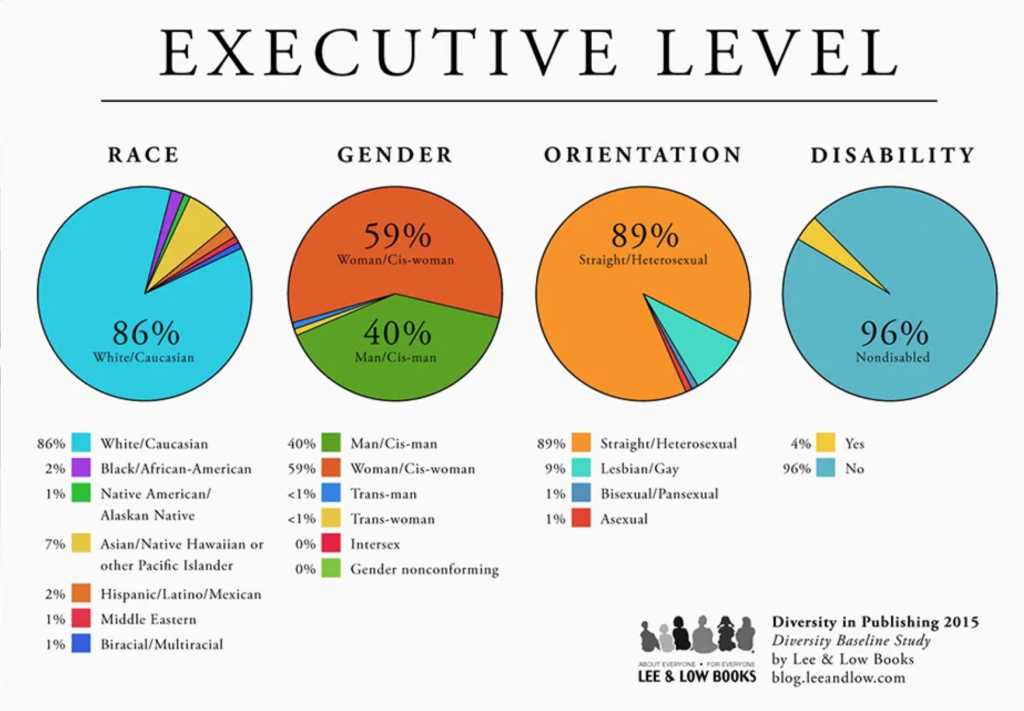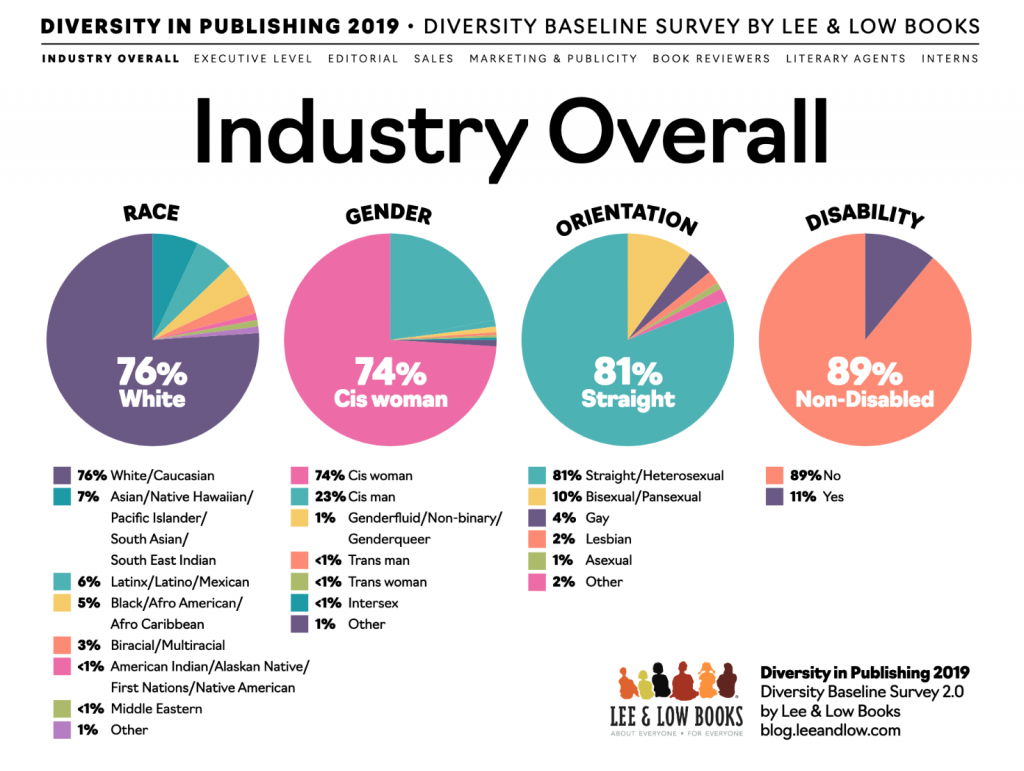Does Diversity Exist in the Publishing Industry?
Books help shape our perception of society. The narratives they tell can be fantastical, otherworldly, as well as practical and relatable. While books can create imaginative and diverse narratives, the publishing industry that works to get these books published, is decidedly less inclusive.
The topic of diversity has been hotly debated in the book and publishing community. Authors and organizations are calling for more representation not only in books but also giving more opportunities for writers of color, writers with disabilities, or other backgrounds to share their stories. This debate can be partly attributed to the fact that the publishing industry is overwhelmingly white, straight, and non-disabled which causes a major roadblock for others to break into the industry as writers, editors, publishers, and much more.
What are diversity statistics for the publishing industry?
Lee and Low Books, an independent bookstore, created the Diversity Baseline Survey in order to get an accurate reflection of how the publishing industry stands today. Their survey done in 2015, found that among 34 of the most prominent publishing houses, 86% of all staff on the executive level such as board members identified as white, 89% as straight/heterosexual, and 96% as non disabled (Dahlen and Catlin). This tells us that the major decisions being made regarding what novels get published and what kind of authors we see marketed towards us up to a disappointing but not surprisingly uniform group of people.

This invisibility of diverse authors that we see directly stems from the lack of diversity amongst the publishing industry as whole. Not only is the executive level mostly white, but so are the editorial, sales, marketing, and reviewer staff. According to that baseline survey, 86% of editorial staff identified as white, 86% heterosexual, and 92% non-disabled (Dahlen and Catlin). These numbers stay the same across the board with the marketing, sales, and book reviewers departments. The decisions made behind the scenes can make or break the success of many authors. All of these departments decide who is chosen and how they are marketed to the public, which can affect who gets their books out on the shelves. How can we see more diverse representation in publishing, if the demographic of the industry behind it is painfully unvaried?
How are publishing houses working towards diversity?
So, how are these publishing houses working towards a more diverse industry? The answer is: they are not. The same baseline survey sent in 2019 by Lee and Low Books, found that there has relatively been no progress at all in diversifying the staff and departments across the board, this time including the top five major publishing houses. The industry overall has remained 76% white, as opposed to 79% in 2015, 81% straight, and 89% non-disabled (Jiménez and Beckert). Over the last four years, no meaningful and significant progress has been made into diversifying these numbers.

Publishers need to make good on their promises of amplifying new voices and paving more opportunities for underrepresented voices. The best way to start this process is by recognizing that diverse authors have an audience that want to see more inclusivity from underrepresented communities. That first step also starts internally by ensuring positions in publishing are including people of all demographics.
Conclusion
People read books in the hopes of having some sense of themselves being reflected on the pages they read. What people may not find in real life, they search for in books. Books written by authors of color, with disabilities, or that identify as LGBTQIA+ create stories that allow people to read about other experiences similar or different to their own. That is why diversity and inclusivity matters especially when it comes to publishing.
Sources
Dahlen, Sarah Park, and Nicole Catlin. “Where Is the Diversity in PUBLISHING? The 2015 Diversity BASELINE Survey Results.” Lee & Low Books, 10 Feb. 2020, blog.leeandlow.com/2016/01/26/where-is-the-diversity-in-publishing-the-2015-diversity-baseline-survey-results/
Jiménez, Laura M, and Betsy Beckert. “Where Is the Diversity in PUBLISHING? The 2019 Diversity BASELINE Survey Results.” Lee & Low Books, 10 Feb. 2020, blog.leeandlow.com/2020/01/28/2019diversitybaselinesurvey/



